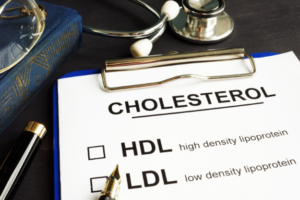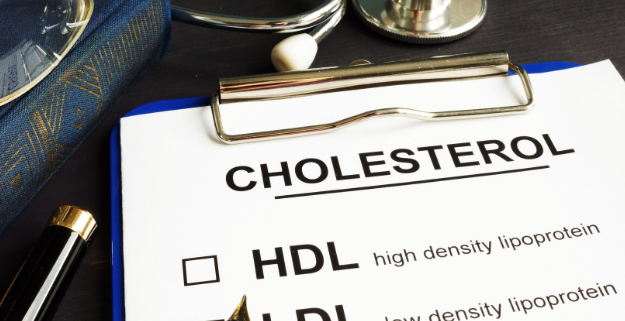6 Ways to Lower Your Cholesterol
 Did you know that people with high cholesterol are twice as likely to have heart disease than people with lower cholesterol levels? This is becausehigh cholesterol is a major risk factor for heart disease, which is the leading cause of death in the United States.
Did you know that people with high cholesterol are twice as likely to have heart disease than people with lower cholesterol levels? This is becausehigh cholesterol is a major risk factor for heart disease, which is the leading cause of death in the United States.
September is National Cholesterol Education Month which makes now the best time to learn more about cholesterol and how you can help better your numbers!
What is Cholesterol?
Cholesterol is a type of fat found in your blood. It can come from two sources: your liver – which makes it’s own, or what you eat – like meat, eggs, butter, cheese and milk.
There are two main types of cholesterol.
- LDL (low-density lipoprotein) cholesterol, or “bad cholesterol,” carries cholesterol from the liver into the bloodstream, where it can stick to the blood vessels. It is desireable to have levels </=100 mg/dL due to it’s heart disease risk.
- HDL (high-density lipoprotein) cholesterol, or “good cholesterol,” carries the cholesterol in the blood back to the liver, where it is broken down. It is desireable to have levels >/=40 mg/dL due to it’s protective benefits.
A desirable level for your total cholesterolis <200 mg/dL.
6 Ways to Positively Impact Your Cholesterol Level
1. Exercise regularly– Regular physical activity can help prevent and lower cholesterol. Start with an easy walk or workout and work your way up to a moderate-intensity level at least 5 days a week for a half hour.
2. Quit Smoking – Smoking is a major risk factor for heart disease as it allows cholesterol to stick more easily to artery walls.
3. Increase Your Dietary Fiber– Fiber plays a big role in lowering your cholesterol levels because of its ability to help your body excrete it. It binds with cholesterol in your blood and then takes it through the rest of your digestive tract, not allowing your body to absorb it. You can increase your fiber by adding more fruits, vegetables, and whole grains into your diet. Swap any white, refined grains for whole grains for an easy increase in fiber.
4. Flavor with herbs and spices– Enhance your food’s flavor by using herbs and spices instead of butter, which is high in saturated fat. Cumin, turmeric, basil and cilantro can be added to most dishes and will add a lot of flavor!
5. Choose more heart healthy fats – Monounsaturated fats are considered heart healthy, these include olive oil, almonds, and avocado. Omega 3 fatty acids are also heart healthy and have anti-inflammatory properties. These can be found in fish (salmon, tuna), flaxseeds, and walnuts. One easy swap to make can be cooking with olive oil instead of butter.
6. Include plant sterols in your diet. Plant sterols are a compound that helps your body block the absorption of cholesterol, which can lead to an overall decrease in your LDL cholesterol. These can be found it wheat germ, wheat bran, peanuts, vegetable oils (corn, sesame, canola and olive oil), almonds and Brussels sprouts.
It’s important to keep in mind that there are some non-modifiable risk factors for high cholesterol, such as older age, being male and having a family history of high cholesterol.
If you have one (or more) of these risk factors, you can still work on lowering your cholesterol, but you may just need a little bit more help! Contact me here if you would like to work on lowering your cholesterol together.
Your Turn to Action: Will you be getting your cholesterol checked during National Cholesterol Education Month?


Leave a Reply
Want to join the discussion?Feel free to contribute!